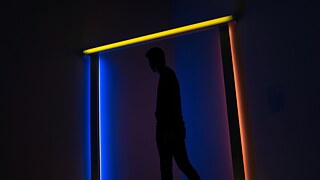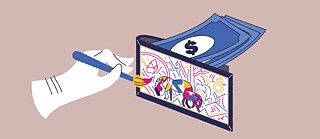Art
A Manual for Deceiving the Experts
Some forgers are as famous as the masters who inspired them. The public does not view them as criminals at all and primarily seems to wonder how they managed to mystify the greatest experts.
In 2006, a work by the German painter Heinrich Campendonk dated 1914, Red Picture with Horses, was sold for 2.8 million euros to the company Trasteco — the highest amount ever reached at an auction for a painting by the artist. The only caveat was that Campendonk was not really the artist...
It was, in fact, a work by the forger Wolfgang Beltracchi, one of the biggest counterfeiters of the 21st century. The scam was discovered a few years later when a laboratory analysis revealed that the painting contained titanium white, a pigment that did not exist at the time when the canvas was supposedly created.
This story illustrates a reality that has plagued the art market for probably as long as it been in existence: counterfeiting, which aims to mislead experts and amateurs alike. The motives are numerous, but profit greed certainly plays a role. Art forgeries are a very lucrative business and more common than you might think: according to various sources, almost 50 percent of the circulating artworks, probably even more, are fakes.
Today, some forgers are as famous as the masters who inspired them. The public does not view them as criminals at all and primarily seems to wonder how they managed to mystify the greatest experts. Their deceptions intrigue more than they shock.
Beltracchi and his wife, Hélène, claimed that the paintings he had in his possession and wanted to sell had been lost during the Second World War. It was indeed not uncommon under the Nazi regime that collectors hid their art. The couple’s fraudulent account claimed that Hélène’s grandfather, a Belgian industrialist based in Cologne, had purchased paintings from a well-known Jewish art dealer at low cost before he went into exile in France. At the time, the story seemed plausible. Only much later, when suspicions began to multiply, was it discovered that the chronology did not add up: Hélène’s grandfather had barely outgrown his adolescence when the alleged transaction occurred.
As for the aesthetic qualities of Beltracchi’s canvases, there is no doubt about it. The most famous experts could not detect the sham, not even Werner Spies, the director of the Musée national d’art moderne at the Centre Pompidou at the time and an expert in works by Max Ernst. Spies went so far as to declare that a painting, which in reality was one of Beltracchi’s forgeries, was one of the major works by the German surrealist painter. Shortly after, a gallery sold that painting for 1.8 million euros... Prestigious auction houses like Sotheby’s and Christie’s sold dozens of other forgeries.
The Beltracchis were eventually accused of selling 14 fake artworks with an estimated sale price of nearly 16 million euros. We can guess that this is undoubtedly just the tip of the iceberg, but the scam has considerably undermined the credibility of the art market. Overnight, works that sold for hundreds of thousands of dollars, or even more, became worthless.
As the sociologist Gary Alan Fine points out, when it comes to forgeries, it is possible to blame the victims. Many forgers say that they wanted to expose the gullible credulity of an art scene that is ready to believe anything in order to raise auction bidding prices. Others, like Han van Meegeren, have reportedly sought to question the expertise of specialists, sometimes as a reaction to their own paintings being ignored or criticized by the experts. In any case, forgers are rarely ashamed of their crime, on the contrary. They generally see themselves as great artists, as white knights denouncing the flaws of a corrupt system.
However, there is still an open question as to how it is possible to use scientific analyses to make counterfeiting more difficult. The American art critic Aline Saarinen points out that if a forgery is so successful that even the best experts cannot tell the difference, then is it not an authentic work of art? The debate continues.
We should all realize that we can only talk about the bad forgeries, the ones that have been detected; the good ones are still hanging on the walls.
Théodore Rousseau
This story illustrates a reality that has plagued the art market for probably as long as it been in existence: counterfeiting, which aims to mislead experts and amateurs alike. The motives are numerous, but profit greed certainly plays a role. Art forgeries are a very lucrative business and more common than you might think: according to various sources, almost 50 percent of the circulating artworks, probably even more, are fakes.
Today, some forgers are as famous as the masters who inspired them. The public does not view them as criminals at all and primarily seems to wonder how they managed to mystify the greatest experts. Their deceptions intrigue more than they shock.
The “Bonnie and Clyde” of art
Beltracchi’s painting was an “original” forgery, which is a textbook example of an oxymoron. The plagiarist did not copy a painting that already existed, nor create a new painting using elements from other Campendonk paintings (a technique associated with the term pastiche). Like the equally famous counterfeiter Han van Meegeren, who painted “new” Vermeers in the interwar period, Beltracchi created a work that did not exist, but due to its extraordinary similarity with other works by Campendonk, it could pass as one of his. Before being discovered, Beltracchi forged hundreds of other artworks, inspired by artists such as Max Ernst, André Derain, and Georges Braque.Beltracchi and his wife, Hélène, claimed that the paintings he had in his possession and wanted to sell had been lost during the Second World War. It was indeed not uncommon under the Nazi regime that collectors hid their art. The couple’s fraudulent account claimed that Hélène’s grandfather, a Belgian industrialist based in Cologne, had purchased paintings from a well-known Jewish art dealer at low cost before he went into exile in France. At the time, the story seemed plausible. Only much later, when suspicions began to multiply, was it discovered that the chronology did not add up: Hélène’s grandfather had barely outgrown his adolescence when the alleged transaction occurred.
As for the aesthetic qualities of Beltracchi’s canvases, there is no doubt about it. The most famous experts could not detect the sham, not even Werner Spies, the director of the Musée national d’art moderne at the Centre Pompidou at the time and an expert in works by Max Ernst. Spies went so far as to declare that a painting, which in reality was one of Beltracchi’s forgeries, was one of the major works by the German surrealist painter. Shortly after, a gallery sold that painting for 1.8 million euros... Prestigious auction houses like Sotheby’s and Christie’s sold dozens of other forgeries.
The Beltracchis were eventually accused of selling 14 fake artworks with an estimated sale price of nearly 16 million euros. We can guess that this is undoubtedly just the tip of the iceberg, but the scam has considerably undermined the credibility of the art market. Overnight, works that sold for hundreds of thousands of dollars, or even more, became worthless.
Virtuosity or fraud?
The exposure of the forgeries revealed the extent of the scam, as well as Beltracchi’s talent, which the experts quickly strove to denigrate. All of a sudden, experts detected only blunders and errors in the laboratory analysis tables, however, not a brush stroke had been changed. If it is true that the value of a painting depends on its historical significance, we can also recognize an attempt by experts using this rhetoric to divert attention away from an art market with overheated pricing that paves the way for those who know how to take advantage of it.As the sociologist Gary Alan Fine points out, when it comes to forgeries, it is possible to blame the victims. Many forgers say that they wanted to expose the gullible credulity of an art scene that is ready to believe anything in order to raise auction bidding prices. Others, like Han van Meegeren, have reportedly sought to question the expertise of specialists, sometimes as a reaction to their own paintings being ignored or criticized by the experts. In any case, forgers are rarely ashamed of their crime, on the contrary. They generally see themselves as great artists, as white knights denouncing the flaws of a corrupt system.
However, there is still an open question as to how it is possible to use scientific analyses to make counterfeiting more difficult. The American art critic Aline Saarinen points out that if a forgery is so successful that even the best experts cannot tell the difference, then is it not an authentic work of art? The debate continues.
Further Reading
- Art Acacia, “Art forgery: Why do we care so much for originals?”, Medium (May 10, 2018).
- Gary Fine, “Cheating History: The Rhetorics of Art Forgery,” Empirical Study of the Arts, vol. 1, n˚ 1, 1983.
- Joshua Hammer, “The greatest fake-art scam in history?”, Vanity Fair (October 10, 2012).
- Saskia Hufnagel and Duncan Chappell, “The Beltracchi affair: A comment and further reflections on the ‘most spectacular’ German art forgery case in recent times,” in Noah Charney (ed.), Art Crime (Palgrave Macmillan, 2016).


